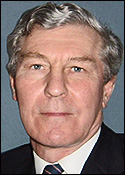RFID vendors and users will meet in Mainz, Germany, today and tomorrow, hoping to agree on a number of measures that could help boost the potential for large-scale UHF RFID deployment across the European Union. The meeting is being held by the European Telecommunications Standards Institute‘s Task Group 34 (ETSI TG34), which is charged with representing the interests of the RFID industry within ETSI for all RFID products and devices.
A major objective of the meeting is to consider the industry’s future spectral requirements over the next five to 10 years. Current regulations on RFID in Europe have led to concerns over the ability of European companies to deploy UHF RFID effectively at large sites where many readers (interrogators) are in close proximity.
RFID UHF bandwidth across the European Union is set at 3 MHz (2 MHz at 2 watts), compared with the 26 MHz available in North America. Meanwhile, European channels are just 200 kHz, versus North America’s maximum of 500 kHz. In addition, readers are required to adhere to a “listen before talk” mode of operation that some European users insist has hampered the effectiveness of UHF RFID in Europe. The Mainz meeting will examine a number of other important subjects, including techniques for boosting the number of interrogators able to operate in close proximity without interfering with each other—the results of recent trials carried out to test a method for increasing reader performance.
“All the subjects set to be covered are pretty fundamental,” says John Falck, chairman of TG34. ETSI represents 46 national communications authorities across the European Union.
The two-day conference will be held at the Federal Network Agency in Mainz, beginning with a demonstration of proposals to increase the number of readers that may transmit simultaneously in dense-reader deployments. The proposals are based on a synchronization technique enabling many interrogators, operating in a dense environment, to share the same frequency simultaneously. The goal, Falck says, will be to study the proposals and hopefully come to a consensus that could result in a common method of synchronization being incorporated in the ETSI’s guidelines for the installation and commissioning of UHF radio frequency identification (RFID) equipment.
Published by ETSI in December 2005 as ETSI TR 102 436, the guidelines contain recommendations only. Observance is voluntary, in the same way ISO standards are voluntary. One of the questions for the meeting, according to Falck, is “What will be required to satisfy each member of TG34 that a proposed synchronization technique is acceptable?”
At the meeting, TG34 will also review the results of recent trials carried out to determine the potential read performance benefits of deploying an RFID portal using two readers with two antennas each, instead one with a single interrogator and four antennas. The purpose is to decide whether the benefits justify inclusion of the configuration in ETSI’s guidelines.
A further objective for the meeting will be to identify the future spectral requirements at UHF for the RFID industry. These requirements will be presented to an upcoming European Commission (EC) workshop. The ultimate goal of the presentation will be to press for more spectrum for UHF RFID in the medium and long terms.
“If deployments continue to grow and RFID becomes a commodity in Europe, then additional spectrum will be needed,” says Falck.
The EC workshop, slated for Brussels on June 2, is one of a series being held this year as part of a wide-ranging initiative designed to help speed the adoption of RFID across the European Union (EU). The workshop will also help ensure that privacy and data security issues are also addressed (see European Commission Works on RFID Policy).


